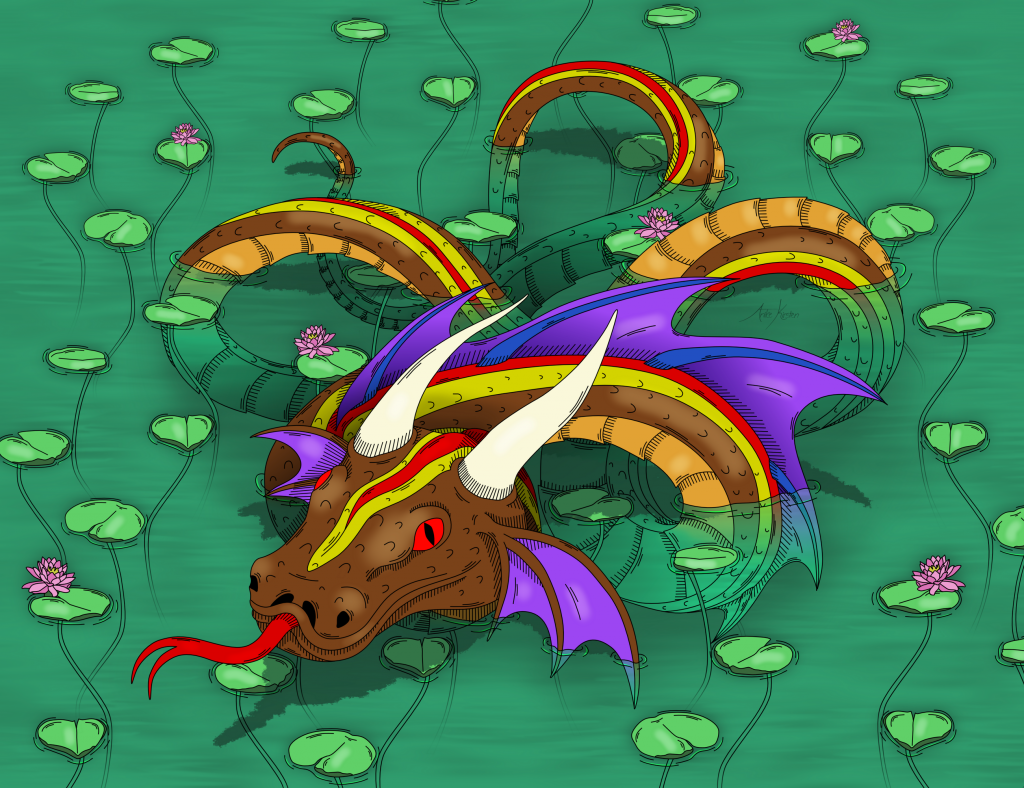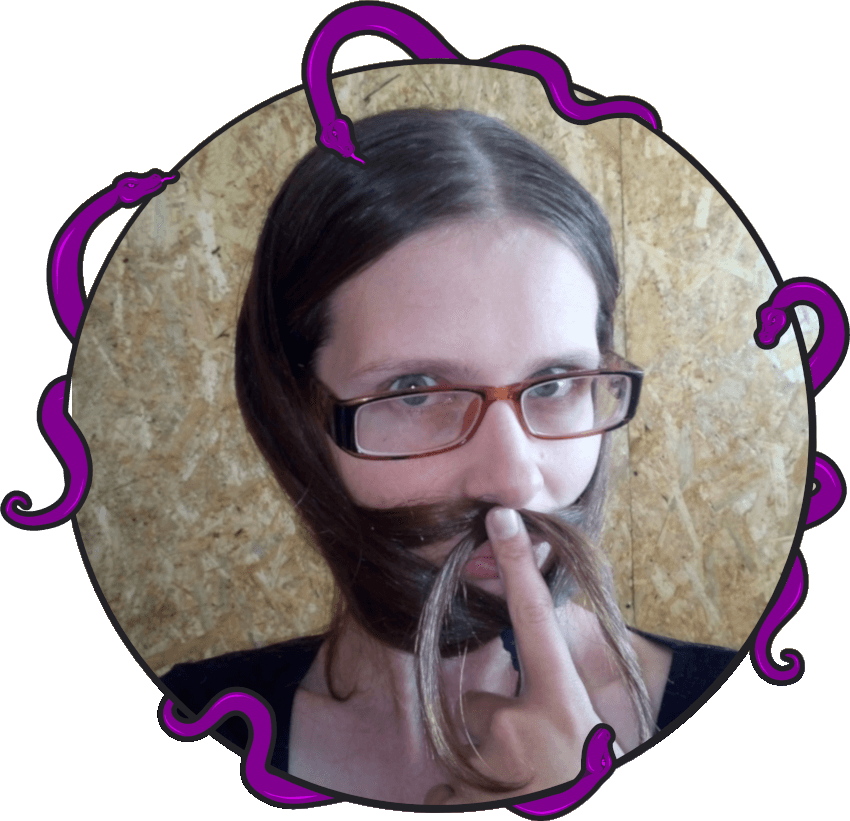Welcome back to the Mythsterhood of the Travelling Tales blog! This week we’ll be looking at the Aboriginal dragons of Australia, known by various names. Sit back, relax, and follow us along in our journey Across The World in 80 (or so) Dragons. And don’t forget you can trace our progress on the MythsterMap (don’t have one yet? click here to sign up and grab it).
Got your map ready? Excellent! Let’s begin.
In Aboriginal mythology, several of the gods are large serpents or snakes, and others are small. Sometimes the serpents have the ability to change forms into another creature or even that of a human. For this episode, we’re focusing on the large serpents as qualifying for our definition of a dragon.

The Rainbow Serpents
Perhaps the most dragon-like mythological creatures found in Aboriginal mythology are the Rainbow Serpents. They are associated with deep waterholes, rain, rivers, and, you guessed it, rainbows. The attribution of “Rainbow Serpent” stems from the belief that rainbows appear when they move from one river or waterhole to occupy another. The English term “Rainbow Serpent” was coined by anthropologist Alfred Radcliffe-Brown.
Rainbow Serpents are a type of dragon across the various tribes of the Aboriginal people. (And not just in Australia, Rainbow Serpent mythology has been found throughout the world, most commonly in Australia and South America.) They are thought to be the descendants of a great entity that lives in the Milky Way galaxy. Yes, a cosmic being known to the Yualai tribe as Kurreah.
While many share similarities across the continent, some tribes ascribe other characteristics to the same dragon. An example of this are the creation gods within the mythologies of the tribes. Some of them are responsible for the creation of the landscape, others for the creation of certain animals.
Dhakkan
Dhakkan is one of the variations of the Rainbow Serpent, who looks like a hybrid between a fish and a snake, that appears in the beliefs of the Kabi tribe. He holds great power that could shatter mountains, though it’s not discussed whether this is by will (magic) or by physical power.
Eingana
Eingana is another Rainbow Serpent, known not only for creating the world, but for holding its life in her hands. She keeps the umbilical cord of every living being she releases. When she cuts it, that being dies. And it is thought that if she dies, the entire world will cease to exist.
Kanmare
Another dragon that appears is the Kanmare, a large snake with a mane around its head. This creature comes from myths in the north-eastern region of Australia. It’s also known as Tulloun by the Mitakoodi people. He not only drowns fishermen who dare to fish alone, but he is also responsible for choosing doctors. While a man is fishing, Kanmare will point a “death-bone” at him. The man will not see this, but before he goes home, he will see the body of Kanmare undulating beneath the surface of the water. He will then fall sick for several days. Eventually, a doctor will be called to cut a stone out of the man. This stone is the same bone Kanmare cast at the man. When the man recovers, he will become a doctor.
Neitee and Yeutta
The Bakanji tribe believe in two huge snake-like creatures with large teeth, named Neitee and Yeutta, who have a particular taste for humans.
These are just some of the giant serpents of Aboriginal mythology. It seems almost every tribe has some variation on the creatures. Common themes remain, though: they are associated with water and great power. Whether that power is working with the people or against them depends on the teller and the situation. Many stories speak of men who are able to harness the power of the Rainbow Serpents because they know the location of certain crystals or can conduct the appropriate rituals. People who lack this knowledge are thought to be at the mercy of the creatures.
There are, of course, many many dragons in Aboriginal mythology. So if you’re itching to learn more, have a listen to our podcast episode on these creatures here if you haven’t already. And you’re more than welcome to have a look through our references as well, there’s so much to discover in there.
Until next time, see you later, Mythsters!

Anike Kirsten
Anike lives in the dead centre of South africa, an area called the Bo-Karoo, where she looks for spiders for fun. She is a writer, illustrator, mother, wife, and nerd-geek hybrid. Anike enjoys all forms of science fiction, fantasy, and horror. Well, almost all forms. Not romance. And loves stories from her home country. She is also one of the Mythster voices who may or may not go off the rails about something or another.
Sources
The Rainbow Serpent Myth of Australia, by A.R. Radcliffe-Brown
https://www.jstor.org/stable/2843596
The Rainbow Serpent
https://web.archive.org/web/20070812015938/http://www.astronomy.pomona.edu/archeo/australia/jennifer.sumner.aborigines/myth1.htm
The Trails of the Rainbow Snake
https://www.youtube.com/watch?v=qxPFx4z3184&list=UUtwQUNGy7Ko4UnmL231GAxw&index=9
Yurlungur – Dictionary of Mythology
https://www.oxfordreference.com/view/10.1093/oi/authority.20110803125659265
Artlandish – Rainbow Serpent
https://www.aboriginal-art-australia.com/aboriginal-art-library/rainbow-serpent/
The Origin of Dragons, by Robert Blust
https://www.jstor.org/stable/40465957

Be First to Comment